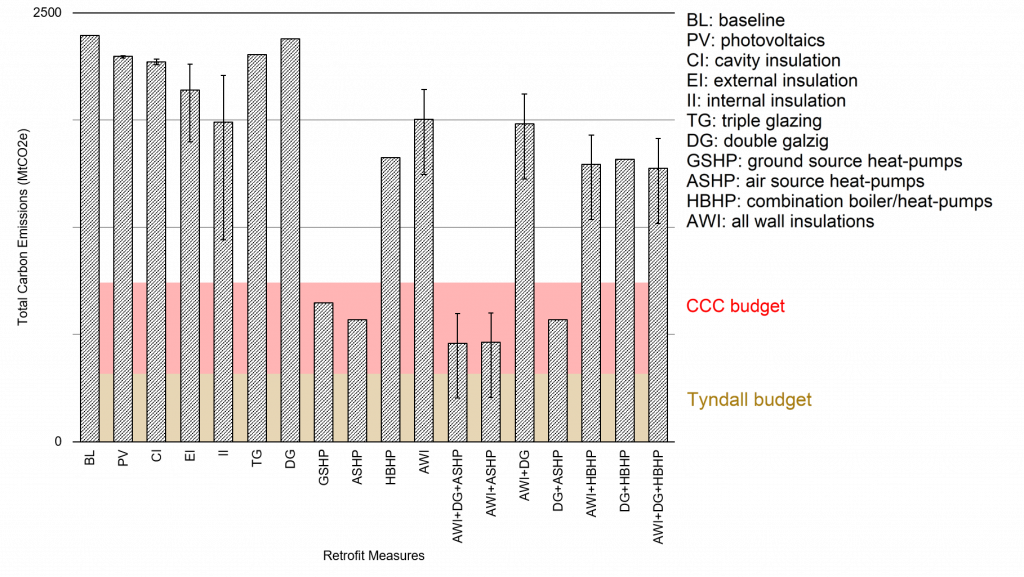It’s a simple question really. In 2019, the UK became one of the first advanced economies to pass legislation to target net zero greenhouse gas emissions by 2050. However, the country is projected to just meet its fourth and fifth carbon reduction targets due largely to the interruption caused by the global COVID-19 pandemic. So, if we are truly going to achieve net zero, what needs to happen?
We’re trying
Recent efforts within the Green Industrial Revolution, while well intended, have failed to deliver the scale and pace of change that is required to meet UK carbon budgets, and deliver the UK’s contribution to the Paris agreement of limiting global warming to 1.5°C. However, buildings, especially the domestic stock, represent a significant opportunity to catapult the UK’s progress towards achieving net-zero carbon emissions.
If the Committee on Climate Changes’ carbon budgets are ratioed down to the domestic housing sector, this sets a budget of approximately 927MtCO2e for England for the period to 2050. This is equivalent to the emissions from roughly 3.5m houses over the same period. Unfortunately, we have over 22m houses currently contributing to national emissions, and that is not counting all the new homes being built to outdated standards on an annual basis!
Try harder!
At the current rate of emissions, England’s homes will have produced around 2,250MtCO2e by 2050 in the absence of carbon capture and storage (CCS) technologies. This means we have 12 years of a business as usual approach before the budget is blown. Moreover, current approaches to calculating emissions often fail to take into account the whole life cycle emissions of buildings and infrastructure. For example, in the recently published Sixth Carbon Budget lifecycle emissions are only discussed for fuels. There is often little consideration of the emissions associated with the manufacturing, processing, construction, maintenance and disposal of materials needed for net zero interventions. Ignoring these critical elements of the lifecycle simply means that we are not counting our true carbon footprint and risk shifting the carbon burden from one system to another, resulting in the UK failing to deliver net zero by 2050.
Retrofit is key
Retrofitting the UK’s existing domestic building stock to improve performance and comfort, and reduce emissions, will play a fundamental role in achieving net zero. To get a sense of the intensity of the retrofit activities that are needed to achieve this decarbonisation goal, we need to look at the embodied and operational emissions for buildings for the 2020-2050 period under a battery of different retrofit measures.

This data makes it clear that in the absence of CCS deployment, total emissions consistently overshoot the 2050 carbon budget in all scenarios, with the exception of those where we aggressively deploy heat pumps and electrify heating. Given the implicit assumption that all these retrofit measures have already been implemented, urgent action is clearly required.
Specifically for domestic buildings, the following are becoming increasingly more essential:
- Targets are needed for a fabric first approach to retrofit homes. A fabric first approach will improve thermal efficiency and reduce heating demand sufficiently for heat pumps to deliver comfortable internal temperatures.
- Heat pump deployment needs to be ramped up now and cannot be delayed until 2028. There are nearly 20 million homes in England alone currently eligible for heat-pumps, installing 600,000 heat pumps per year means an additional 25 years will be required after 2028 before every home has one.
- Zero carbon legislation for new buildings. Every new building constructed that is not zero carbon in operation is another building that will need to be retrofitted before 2050.
- Network ambition. Current targets for offshore wind are insufficient to power every home without deep retrofit to reduce domestic energy demand. On-going work at the University of Sheffield in collaboration with CREDS at UCL estimates that meeting a more stringent Tyndall centre carbon budget for the domestic sector would require deployment of at least 30 thousand 2MW wind turbines in the next year in tandem with the nationwide installation of heat-pumps and double glazing under the National Grid’s steady progression scenario of decarbonisation of the grid.
Hadi Arbabi is a Lecturer at the University of Sheffield and has a background in data-driven urban engineering and planning. In developing this article, he worked closely with Danielle Densley Tingley and Xinyi Li from University of Sheffield, and Tadj Oreszczyn and George Bennett from UCL.


